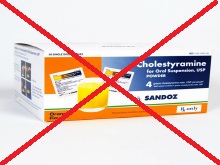“Cholestyramine” or “Colestyramine”, Mycotoxins and Mold
The science of mycotoxin detoxification is a complex subject. Historical evidence has allowed us to conclude that Cholestyramine is one of the least effective binding agents in relationship to mycotoxin removal from the body. With recent advancements in this medical field it is clear that more complex and effective binding agents for mycotoxin detoxification and removal are currently available.
What is the purpose clinnically for the use of Cholestyramine:
Cholestyramine removes bile acids from the body by forming insoluble complexes with bile acids in the intestine, which are then excreted in the feces.
When bile acids are excreted, plasma cholesterol is converted to bile acid to normalize bile acid levels. This conversion of cholesterol into bile acids lowers plasma cholesterol concentrations.
The theory that all mycotoxins can be bound out of the body is long outdated. The latest research dictates not all mycotoxins can be bound, some must be dissolved, while other must be deactivated, this is a constantly evolving science
No scientific evidence is available that supports that the clinical use of Cholestyramine actually effectively binds any mycotoxins out of the body. The historical evidence supports the use of Cholestyramine as an effort to rid the human body of mycotoxins may provide no more than a placebo effect in most patients as used by certain doctors
The National Treatment Centers for Environmental Disease uses a three step method for the removal of mycotoxins from the body.

